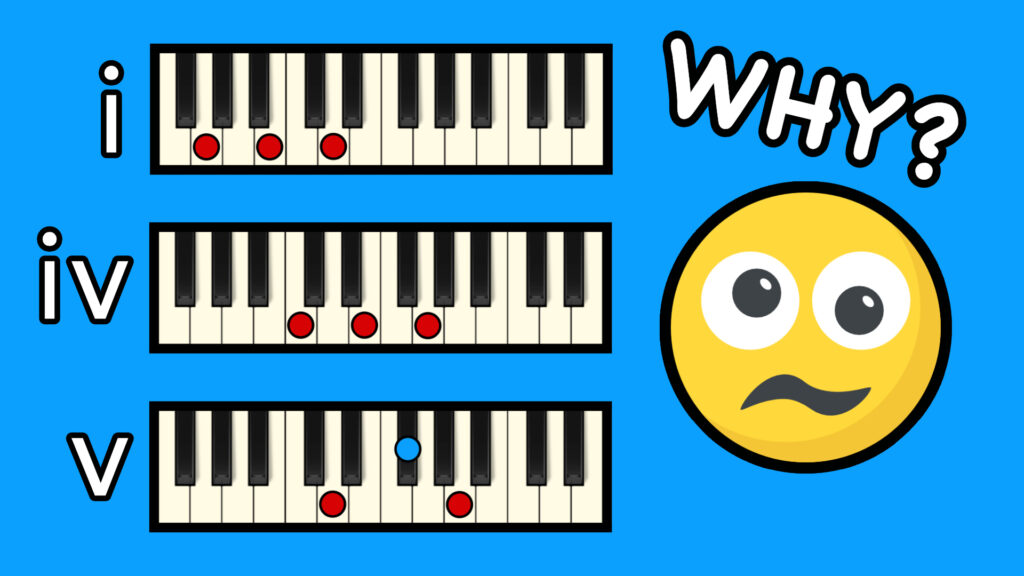 Have you ever wondered why so many songs only use 3 chords, or at least heavily focus on those 3 chords throughout the arrangement?
Have you ever wondered why so many songs only use 3 chords, or at least heavily focus on those 3 chords throughout the arrangement?
For example, you can jump around on G, C, and D, and that’s all you need to write a song. Let’s find out why these 3 chords rule in music.
The Power of i – iv – v Chords
The reason why these 3 chords are so incredibly important in all music, regardless of genre and style, is actually mathematics.
Because all intervals in music are based on mathematical relationships between the frequencies of each note. In fact, that’s why we love music, because it is based on the language of the entire universe and nature around us.
In music theory we use roman numerals to label the scale degrees: i is the root or tonic. iv is the perfect 4th, and v is the perfect 5th.
Now, let me demonstrate their strong mathematical relationship with a practical example. Let’s take the single most important note in music: A4, which is the pitch base for our entire tuning system. It has an exact frequency of 440 Hz.
The first lesson you need to learn is that, any note octave in music is a multiple of the same note frequency. So A4 is 440 Hz, and if you go up an octave you will land on the exact double of this frequency. A5 is therefore 880Hz. And the opposite in the other direction, meaning A3 is 220Hz.
If you start on A4, and go up a perfect 5th (V), it will be 3/2 of that frequency. So 440 HZ x 3/2.
And if you go from the root A (I) to the perfect 5th it will be 4/3 of that frequency. So 440 Hz x 4/3. However, you can also flip the perspective, and look at the perfect 4th interval in relationship to the perfect octave.
So instead of comparing to the root A4, you compare the frequency relationship between the perfect 4th and the octave A5. You will then realise that this relationship is the mirror image of the Root vs Perfect 5th. Meaning a 3/2 apart in frequency.
So in conclusion: the reason for why the scale degrees i – iv – v, and their corresponding chords rule in music, is that they share a super important mathematical frequency relationship with each other, based on 3/2, or in other words, half way (1,5x) in between each other.

